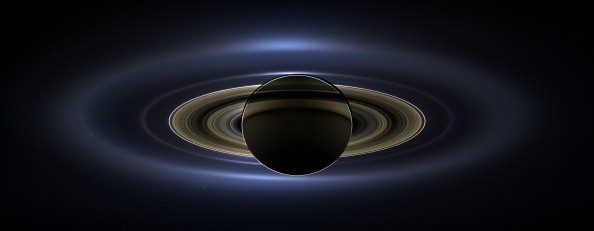A new study reveals the estimated age of Saturn's moons and rings, where some of its icy moons may have been formed after many dinosaurs roamed the Earth.
It is no news that the rings of the second-largest planet in the Solar System, after Jupiter, have been known subsequent to the early 1600s. Regardless of that, there is still apparently a debate about their precise or estimated age, as the direct supposition is that they are primordial or as old as the planet itself, which is more than four billion years.
However, a recent study from a group of scientists at the Search for Extraterrestrial Intelligence Institute (SETI) has shed new light on Saturn's rings and moons. The new research proposes that some of Saturn's icy moons and rings may be current embellishments, where its dramatic birth might have occurred a mere hundred million years ago, making it younger than some dinosaurs who have reigned on Earth.
"Moons are always changing their orbits. That's inevitable," SETI Institute Principal Investigator Matija Cuk said, in a press release statement. "But that fact allows us to use computer simulations to tease out the history of Saturn's inner moon."
In 2012, French astronomers found out that tidal effects, or the gravitational impacts of the inner moons with fluids somewhere down in Saturn's interior, are apparently causing the moons to move to larger orbits in the event that they had been around sufficiently long enough. Given the present positions, the implication states that these moons and rings are recent phenomena.
To construe the past dynamic behavior of Saturn's icy inner moons, Cuk, together with Luke Dones and David Nesvorny of the Southwest Research Institute used a new computer modeling of the Saturnian system, where they found out how much the orbits of Saturn's moons developed.
The team analyzed the orbital data from the planet's moon, permitting them to find out the age of the rings and moons of the said planet. Their analysis pointed out that at least three out of 62 moons are showing orbital tilts that are bizarre for moons that have been around a long time.
The orbits of the three moons namely Tethys, Rhea and Dione, are apparently less dramatically altered than previously suspected. Adding that the small orbital tilts only means that they have not crossed numerous orbital resonances, implying that they probably shaped not far from where they are now, The Science Daily reported.
"So the question arises, what caused the recent birth of the inner moons?" asks Cuk. "Our best guess is that Saturn had a similar collection of moons before, but their orbits were disturbed by a special kind of orbital resonance involving Saturn's motion around the Sun."
Cuk added that, in the long run, the orbits of neighboring moons crossed, and these objects apparently impacted one another. Thus, the present set of moons and rings were formed. Watch the video below for more information:




























